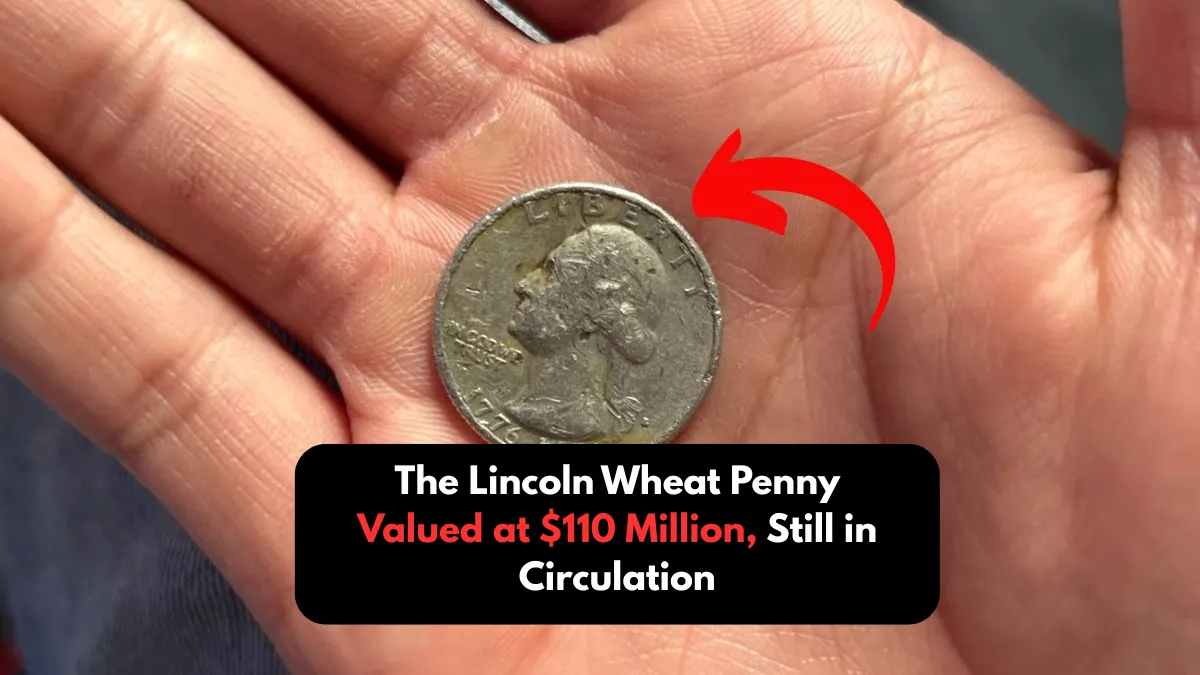What Is a Lincoln Wheat Penny?
The Lincoln Wheat Penny was first issued in 1909 to honor the 100th anniversary of Abraham Lincoln’s birth. It was notable for being the first U.S. coin to feature the image of an actual person.
The reverse side of the coin displayed two stalks of wheat, a design that remained in use until 1958. Although millions of these pennies were produced, certain versions are exceptionally rare and sought after, especially those with minting errors or produced in very limited quantities.
Is There Really a $110 Million Penny?
To be clear, no Lincoln Wheat Penny has ever been sold for $110 million. This figure likely stems from online rumors or fraudulent listings rather than any genuine auction result. Nonetheless, some of these pennies have fetched impressive sums—sometimes exceeding a million dollars.
Collectors often speculate that a perfect specimen of a rare variety could potentially command a high price, but $110 million is far beyond any verified sales. For example, a 1943 copper Wheat Penny—an error coin since most 1943 pennies were made of steel—has sold for over $1.7 million. While a flawless one might break records, it wouldn’t reach anywhere near that $110 million figure.
What Makes a Penny Valuable?
Not every old penny holds significant value. Typically, the most prized coins have certain characteristics: they are extremely rare, contain minting errors, have strong collector demand, and are in excellent condition. The combination of scarcity and desirability drives their worth.
A coin that ticks all these boxes can be worth thousands, sometimes even millions of dollars. Condition matters greatly because collectors are willing to pay a premium for coins that have been preserved with minimal wear and damage.
Rare Lincoln Pennies to Look For
Several specific Wheat Pennies are especially valuable and worth watching for. Among these are the 1943 copper penny, which is very rare due to an accidental use of copper that year instead of steel. The 1909-S VDB penny is another collectible rarity, with only 484,000 minted.
The 1914-D penny is scarce and highly sought after by collectors. Lastly, the 1955 doubled die penny, which shows a distinctive doubling effect in its lettering, is a favorite among numismatists. Depending on their condition, these coins can be worth from a few thousand dollars to over a million.
Could One Still Be in Circulation?
It’s certainly possible, though unlikely, that a rare Wheat Penny might still be found in everyday change. Many people don’t realize the value of coins they have, so sometimes rare pennies turn up in loose change jars, piggy banks, or even at garage sales.
This possibility encourages coin collectors to examine pennies carefully and even search through rolls of coins from banks in hopes of discovering a hidden treasure.
Found a Strange Penny? Here’s What to Do
If you come across a penny that looks unusual or rare, avoid cleaning it as that can significantly reduce its value. Instead, handle the coin with care—ideally using gloves—and store it safely.
For an accurate assessment, consider having the coin professionally graded by organizations such as PCGS or NGC. If you decide to sell, using a reputable auction house or dealer will help ensure you receive a fair price.
Final Thoughts
While the idea of a $110 million Lincoln Wheat Penny is almost certainly a myth, there is no doubt that some of these coins have sold for life-changing amounts of money. Valuable pennies still exist, and some might even be hiding unnoticed in everyday pockets or collections.
Next time you check your change, take a closer look—you could be holding a small piece of American history and, who knows, maybe even a valuable collectible.
John M. Moody is a passionate writer known for his insightful and engaging storytelling. With a background in astrology and a love for exploring the human experience, John weaves cosmic wisdom into compelling narratives that inspire and enlighten. His work spans articles, essays, and spiritual guides, often blending mystical themes with real-life reflections. When he's not writing, John enjoys stargazing, reading mythology, and connecting with nature for creative inspiration.
